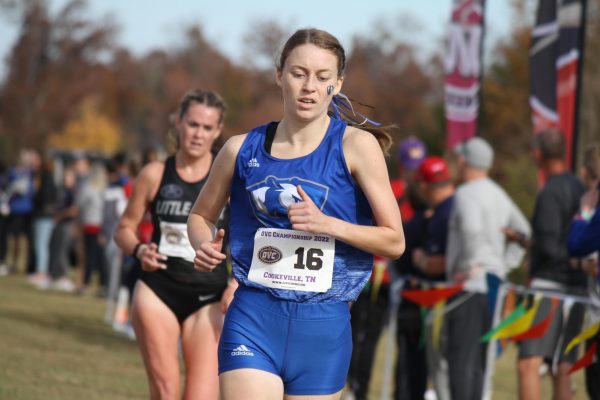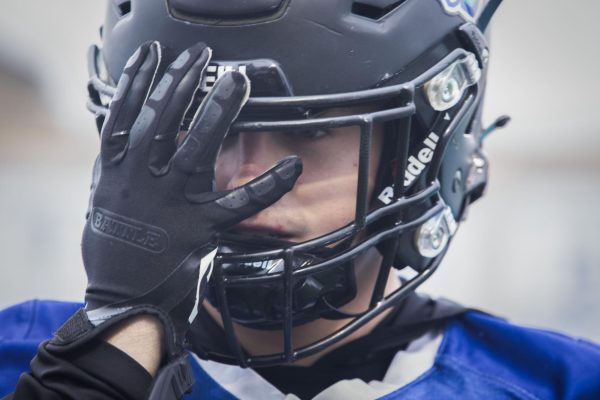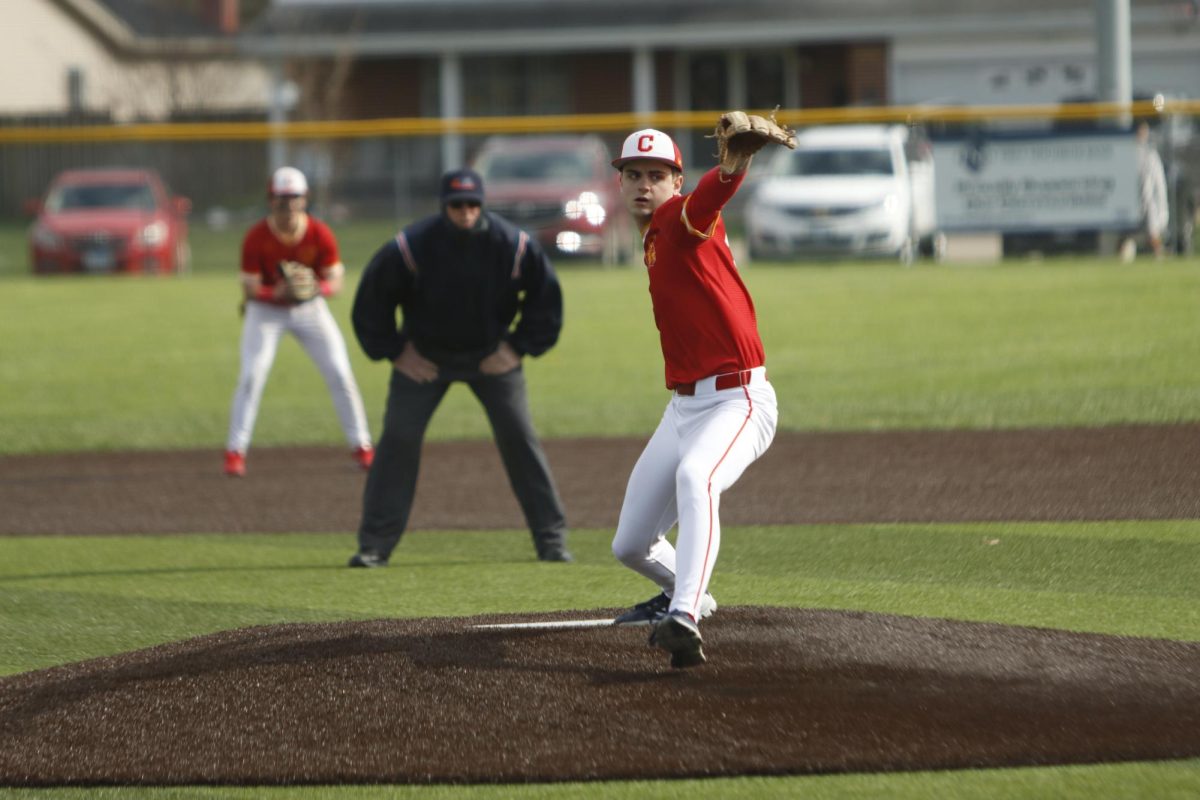On July 17, the Ohio Valley Conference (OVC) sent a letter of concern to the NCAA’s Division I Board of Directors. In this letter, they expressed their disappointment with the handling of a $2.75 billion settlement proposed by the NCAA and their Power Five conferences (ACC, SEC, Big-10, Big-12 and PAC-12) to provide back pay to former student-athletes.
In order to pay off this settlement, the NCAA is reducing their yearly revenue distributions, which would normally provide additional funding to schools and their conferences. Schools in the Football Championship Subdivision (FCS) — such as Eastern — will lose roughly $265,000 a year for the next decade.
“Everybody already operates on a razor thin budget the way it is,” said Eastern’s Athletic Director, Tom Micheal. “Then you start cutting where there’s not much meat on the bone anymore. It’s really going to be hard.”
In their letter, the OVC expressed concern regarding the funds they are expected to give up. The conference said programs like those in the OVC are unable to “flip the switch” and generate funds like those at larger schools can.

The OVC said they will find a way to pay the NCAA, but must resort to “cutting sports, limiting championships, or eliminating coaches” to do so. (Eastern Illinois University Athletics) To make up for the reduced funds, the OVC says they will resort to “cutting sports, limiting championships, or eliminating coaches”, which, the OVC argues, “does not mesh with lawsuits focused on providing more benefits to student-athletes”.
The OVC says schools like Eastern cannot swiftly regain revenue which is now being redirected to pay off the NCAA’s settlement.
The AP previously reported on a general feeling of unfairness surrounding lower DI institutions. Programs at schools like Eastern rely heavily on NCAA funds, as opposed to larger institutions who can operate independently. The OVC letter argues the funds required from them will impact their schools disproportionately to those larger institutions.
“It hits us harder. We’re dependent on NCAA distributions,” said an administrator from a non-FBS football conference to the Associate Press.
The $265 thousand dollars required from Eastern every year is roughly 2% of the school’s annual sports budget, which is more or less $14 million depending on the year. Schools in the Power Five conferences will have to pay roughly $1 million annually. For context, $1 million is about 0.4% of Ohio States 2023 athletic budget of roughly $280 million.
Yet, despite comparatively less of their budget being used to pay the settlement, Power Five schools are still shouldering most of the burden. These schools now have to pay their athletes directly, something unheard of in college athletics until this settlement.
In the three lawsuits which the settlement could potentially close, the NCAA and its Power Five conferences were the only named defendants. As a result, those entities were the only ones involved in the settlement negotiation process.
“22 conferences, one of which we are a part of, didn’t have any seat at the table, or any influence whatsoever,” said Micheal. “And I think that’s the frustrating part. You feel like (The NCAA) is supposed to be representing us, and our best interests, yet that didn’t happen. Not only did it not happen, (The NCAA) didn’t even seek how it might impact us.”
Eastern’s President and member of the OVC’s Board of Presidents, Jay Gatrell, shared his sentiments.
“It’s challenging to think about institutions like Eastern paying a disproportionate share of their annual budgets to reach a settlement in a case in which they weren’t a named party, and in a case where they don’t really yield any benefits from the legislation or protections for the next ten years.”
Towards the end of the OVC’s letter, they ask the NCAA to “consider developing a governance model that does not allow more than 75% of Division I conferences to be precluded from ongoing litigation and settlement discussions because they are unnamed defendants”. The letter would go on to note that the NCAA’s current practices are legal yet result in distrust among their members.
Of the total $2.75 billion settlement, the NCAA will pay for roughly 41% with reserved funds. The Power Five conferences will pay roughly 25%.
The remaining total of roughly 33% will be paid by the Group of Five conferences (non-Power Five FBS conferences, think Northern Illinois or Western Michigan) who are responsible for 9%, the FCS who are responsible for 12%, and non-football Division I schools (think Gonzaga or Creighton) who are also responsible for 12%.
The NCAA alongside the Power Five conferences chose these percentages based on the funds each section received from the NCAA in revenue distribution for the last eight years.
Micheal and Eastern’s athletic department were made aware of the settlement in early May. They expect to have until early 2025 to create a new budget accounting for the loss in revenue. If the current settlement is approved (decision pending from Judge Claudia Wilken), the athletic department will have to clear $265 thousand.
The OVC’s letter alludes that championships, coaches or entire sports are not only on the table but are in danger of being limited or cut.

The conference proposed a new method of collection that would lighten the load for smaller conferences. The NCAA would pay for 60% of the total settlement, while the remaining 40% would be split among the same levels (Power Five, Group of Five, FCS, Non-football FCS).
The letter closed with a plea that the NCAA “be mindful of the unique category of Division I schools classified as low-resource institutions” and to “determine a fair distribution process that does not place a financial burden on schools that were not full Division I members at the time the rules at issue were adopted”.
Of the 11 schools in the OVC, two (University of Southern Indiana and Lindenwood University) were not full Division I members when the lawsuits were filed.
The OVC asks that the NCAA reconsider the current methodology for paying their settlement, has “the endorsed model will result in cuts in sports, benefits, and opportunities for student-athletes and counter the
base litigation’s intention”.
If the current system doesn’t change, Micheal says Eastern will search for the best path to cut spending. He says the OVC has already gone through talks to find where they can reduce spending at the conference level.
“What we have to look at is where the impact is going to be, what does that ultimately look like,” said Micheals. “Nobody wants to go into this and say that cutting sports is something that we want to do, and I hope we can find a solution without doing that.”
Aidan Cusack can be reached at 581-2812 or at atcusack@eiu.edu.






![[Thumbnail] Eastern's Old Main was quiet Thursday morning while educators who had left the office to strike picketed outside.](https://www.dailyeasternnews.com/wp-content/uploads/2025/04/Strike_01_LT_O-800x1200.jpg)








